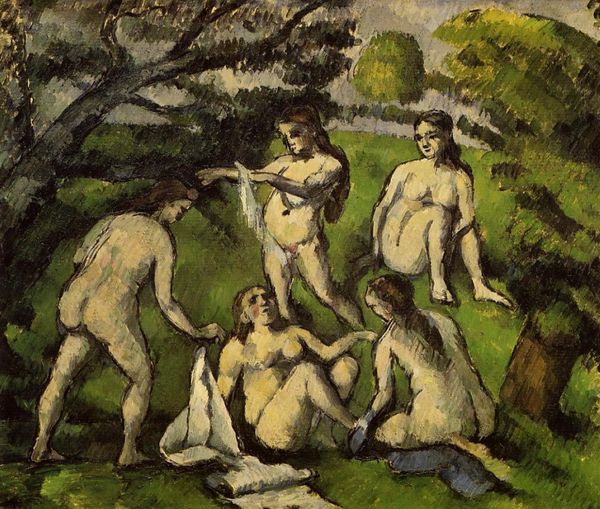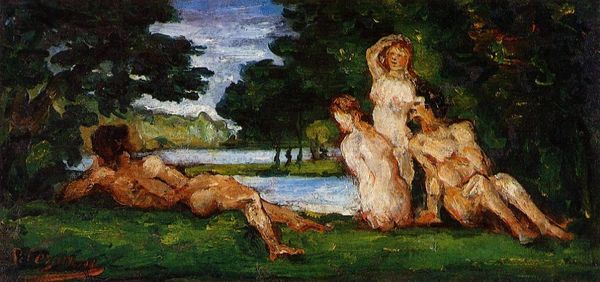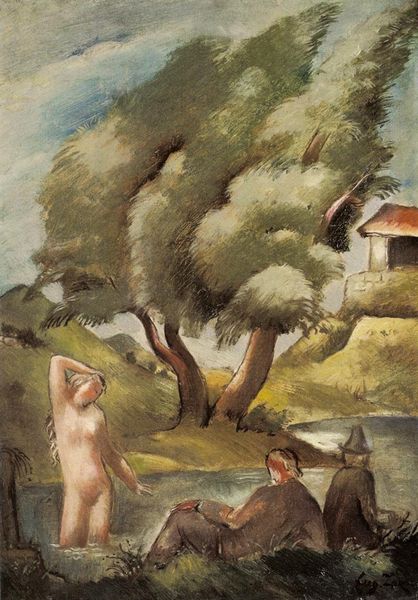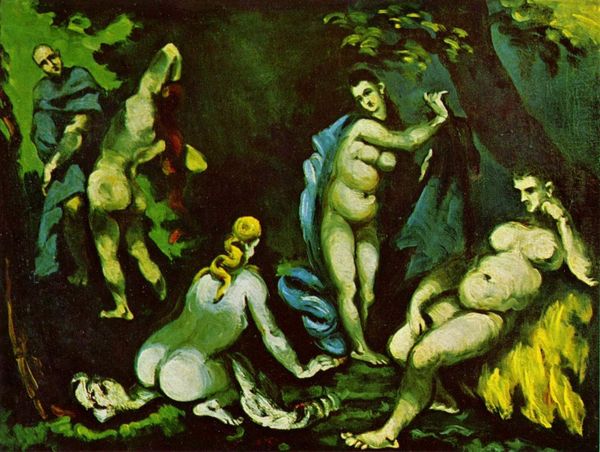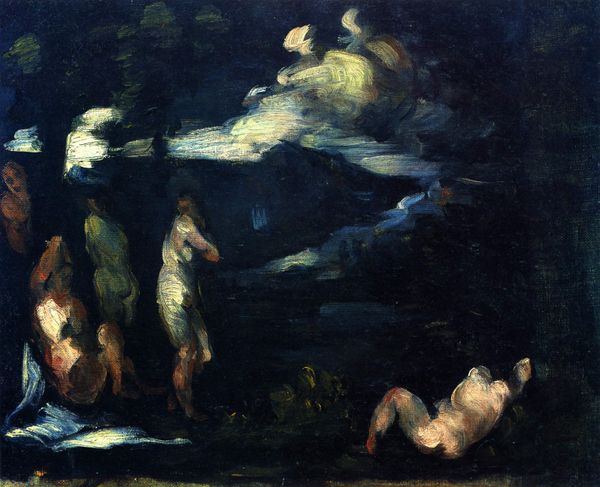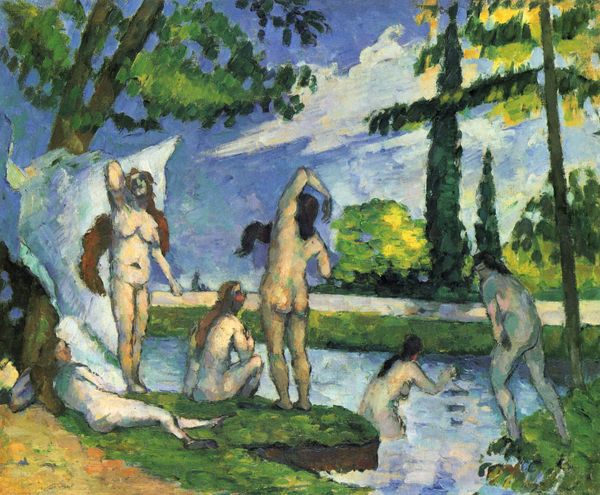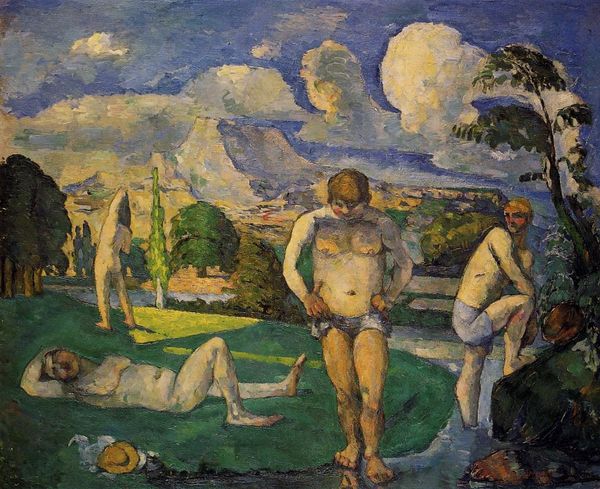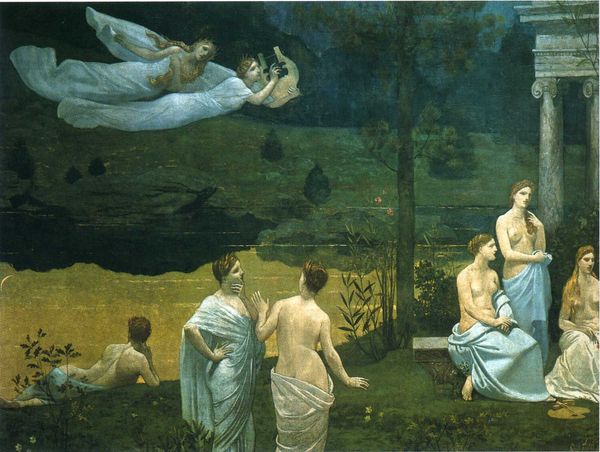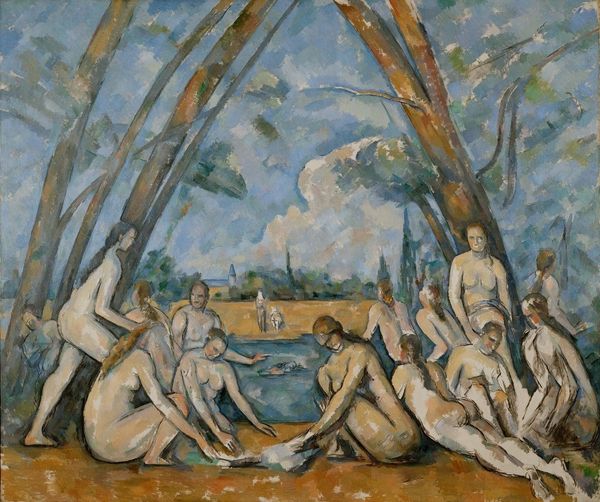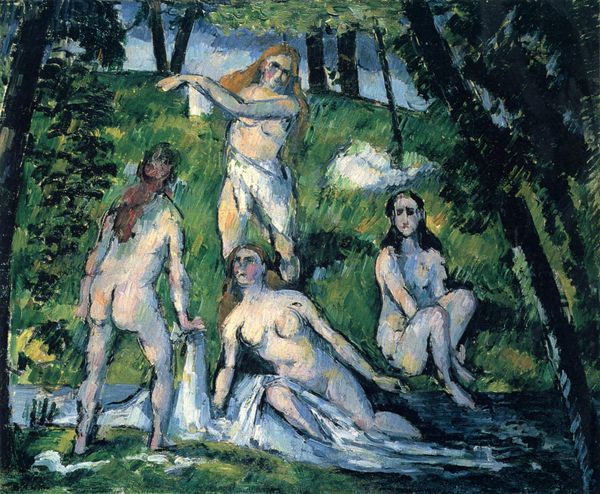
Dimensions: 65 x 81 cm
Copyright: Public domain
Paul Cézanne painted Pastoral, or Idyll, in France some time in the late 19th century, though the exact date is unknown. The figures in the painting, nude and clothed, recall classical depictions of arcadia, or pastoral scenes. However, it is important to consider the painting’s status as a modern work. Cézanne was painting at a time when traditional academic painting was in decline. Impressionism, with its focus on light and color, and its rejection of historical or mythological subject matter, was on the rise. Cézanne was associated with the Impressionists, but he also broke from them in important ways. Cézanne’s painting acknowledges traditional artistic values while also questioning and subverting them. The nude figures are not idealized, and the landscape is not picturesque. Instead, Cézanne seems to be interested in the formal qualities of the painting itself, the way the colors and shapes interact with one another. To understand this painting fully, one might look at the history of the nude in Western art, the development of Impressionism, and the changing social and cultural values of late 19th century France.
Comments
No comments
Be the first to comment and join the conversation on the ultimate creative platform.
